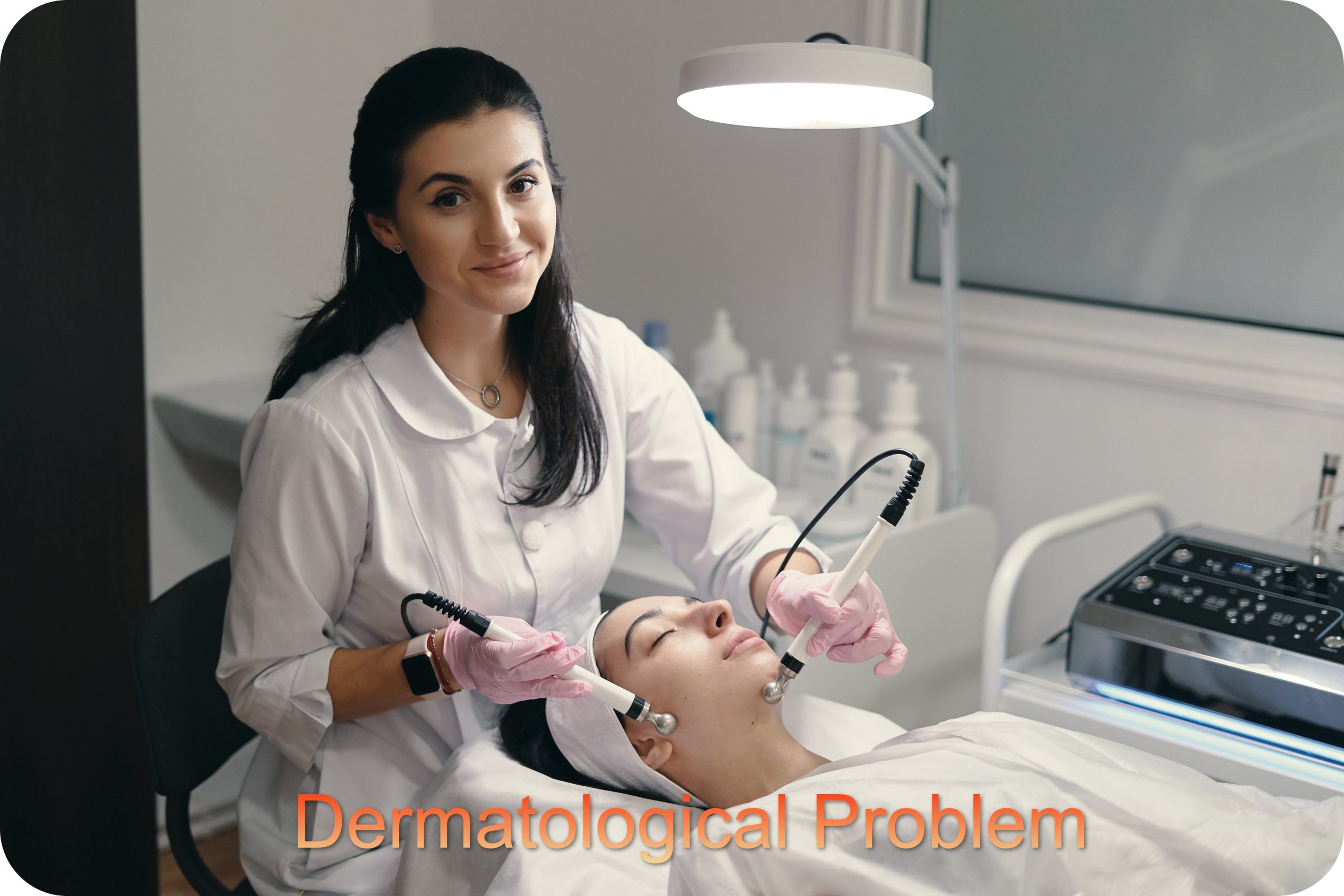Your skin isn’t just the outer layer; it’s your body’s first line of defense. When skin problems pop up, they can affect more than just your appearance—they can hurt confidence and even lead to serious health risks. Millions worldwide face common dermatological problem issues like acne, eczema, or psoriasis. Catching these early can save you discomfort and costly treatments later. This article offers a complete overview of skin problems, what causes them, what signs to watch for, and how to deal with them effectively.
Understanding Dermatological Problems: An Overview
What is Dermatological Problem?
Dermatology covers conditions that affect your skin, hair, and nails. These issues can range from simple rashes to serious diseases. They fall into different groups, including infections, inflammation, and chronic illnesses like psoriasis. Knowing what type of problem you face helps in finding the right treatment.
Why Are Skin Conditions Increasing?
Skin problems seem to be more common today. Why? Several factors play a role. Pollution damages skin cells, making issues more likely. Fast-paced lifestyles, stress, and poor diets also weaken your skin’s defense. Plus, genetic factors can make some people more prone to certain conditions. All these elements add up, resulting in more skin issues than ever before.
Impact of Skin Disorders on Quality of Life
Skin problems don’t just look bad—they can make you feel anxious, upset, or embarrassed. Many people hide their skin problems instead of seeking help, which can worsen mental health. A study shows that skin diseases are linked to depression and low self-esteem, proving it’s about more than just appearance.
Common Dermatological Problem: Symptoms, Causes, and Management
Acne Vulgaris
Most teenagers know acne well. It affects everyone, especially during puberty. Acne forms when hormones cause excess oil, trapping bacteria and dirt. Pimples, blackheads, and cysts appear on face, back, or chest. Treatments include topical creams like retinoids, antibiotics, and lifestyle changes such as regular washing.
Eczema (Atopic Dermatitis)
Eczema shows up as dry, itchy, inflamed skin. It’s common in kids but can affect adults too. Genetic factors, allergies, and environmental triggers cause eczema flare-ups. Managing eczema means moisturizing often, using steroid creams, and avoiding allergens like certain soaps or fabrics.
Psoriasis
This chronic disease produces thick, scaly patches on skin. It may appear anywhere, from elbows to scalp. Psoriasis involves your immune system attacking healthy skin cells. Treatments include photo therapy, special medicines called biologics, and topical options like corticosteroids.
Fungal Infections
Fungal issues like ringworm, athlete’s foot, or yeast infections cause discomfort and look like red, ring-shaped rashes or patches. Moist environments and poor hygiene boost fungal growth. Anti-fungal creams and powders usually clear up these infections. Proper hygiene is key to prevention.
Skin Allergies and Contact Dermatitis
Many skin reactions are caused by allergies to metals, fragrances, or certain chemicals. Symptoms range from redness, swelling, to blistering. Avoid known triggers, and if needed, antihistamines or steroid creams can reduce symptoms. Always read product labels carefully.
Skin Cancers
Skin cancers like basal cell carcinoma, squamous cell carcinoma, and melanoma are serious. UV rays from the sun or tanning beds increase risk. Early signs include unusual moles or spots, often with irregular borders or changing colors. Diagnosing early and removing cancer through surgery or treatments like immunotherapy greatly improves outcomes.
Diagnostic Approaches and When to Seek Medical Help
Clinical Evaluation and Tests
Doctors start with a thorough examination. They might perform skin biopsies, allergy tests, or use a special tool called a dermoscope. These give clearer insights into the skin issue, helping to choose the best treatment plan.
Recognizing Urgent Symptoms
Some problems require quick attention. Bright red, bleeding, or rapidly changing spots could be signs of cancer. Severe pain, swelling, or fever with skin issues might signal infection. Don’t wait—see a dermatologist promptly.
Self-Care Tips and Preventive Measures
Keeping skin healthy involves good daily habits:
- Gently wash skin with mild soap
- Use sunscreen daily to block UV rays
- Stay hydrated and eat foods rich in vitamins
- Avoid scratching or picking at skin issues
- Wear protective clothing outdoors
Emerging Treatments and Future Outlook in Dermatology
Advances in Medical and Cosmetic Dermatology
New treatments like biologics target specific immune responses, making therapy more effective. Laser and light-based therapies help with scars, wrinkles, and more. These innovations mean quicker, less painful results.
Role of Teledermatology
Remote consultations are helping millions get skin checks without leaving home. Apps and online platforms let dermatologists view images and give quick advice. This reduces wait times and improves access, especially in rural areas.
Research and Development
Scientists are working on new medicines and techniques that promise better care. Personalized treatments based on your genetics are on the horizon, offering more targeted and effective solutions for skin conditions.
Conclusion
Skin problems cover a wide range of issues, from acne to cancer. They have many causes, and recognizing early signs can make treatment easier. Many skin conditions are treatable, and early action helps prevent serious complications. Keep your skin healthy by practicing good hygiene, protecting it from sun damage, and seeing a doctor when problems arise. Your skin is part of you—taking care of it boosts your confidence and overall health. Prioritize your skin, and it will thank you for years to come.
I hope this article on dermatological problem will help many people suffering through it and also find important information how to get it cured ASAP.

